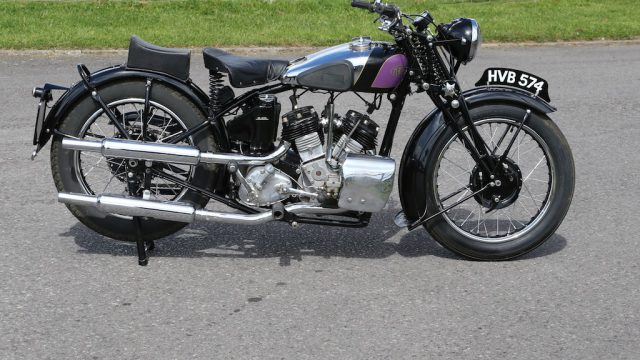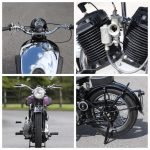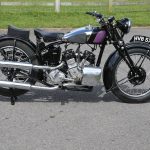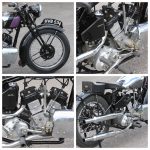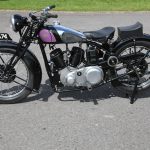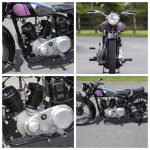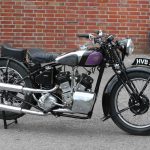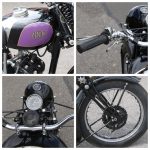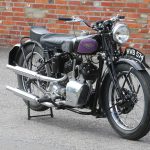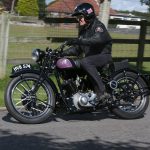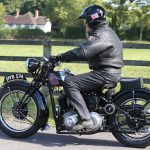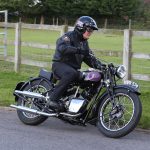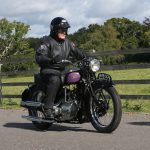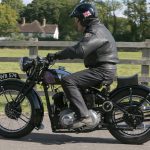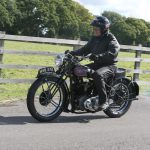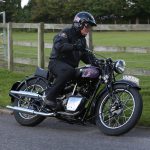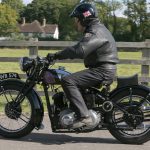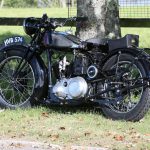First road test in the modern era of the final model produced by one of Britain’s least-known but most historically significant marques, Zenith Motors
Zenith [noun, usually singular] = pinnacle, apogee, summit [antonym, nadir, abyss]. That’s how the Cambridge Dictionary describes the name that British engineer Frederick W. Barnes, then 27, chose in 1905 to market an innovative two-wheeler with a low-slung frame and hub-centre steering named the Bi-car. Powered by a 3hp German Fafnir engine, when launched at the Crystal Palace show that year this was said to be ‘A revolution in motorcycles'. Though the Bi-car had but a short life, its maker went on to experience both the zenith and the nadir of two-wheeled existence, including copious Brooklands race victories, and twice breaking the World Land Speed Record. Moreover, Zenith rode out two World Wars, but in between them also survived receivership as a consequence of the Depression, before finally dying a death in 1950 simply because it could no longer source engines to fit in its bikes. That’s quite some roller-coaster ride.
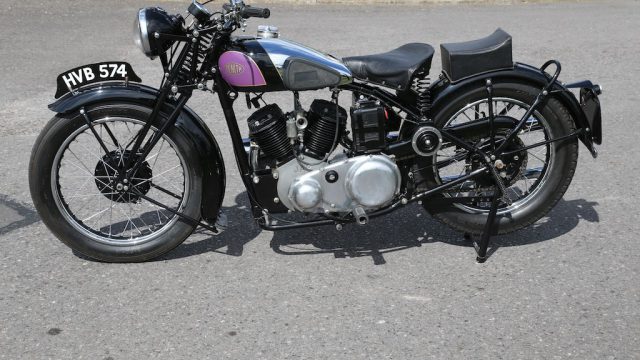
London-based Zenith Motors was only ever a relatively small manufacturer, but had significant success in speed contests throughout the 'Teens and ‘20s. Manchester-born Freddie Barnes was the driving force behind it, a pioneering inventor who relished the stimulus of competition. After the Bi-car he began production of more conventional Zenith motorcycles in 1907 in his North London workshop at Finsbury Park with the Fafnir-powered Zenette, with a Druid girder fork and a triangular frame with optional scissor-action rear suspension. But in 1908, to overcome the difficulty of climbing gradients in the days before motorcycles had gearboxes, when direct drive to the rear wheel, invariably via belt, was the industry norm, Barnes developed and patented his own Gradua Gear system. Originally known as the ‘Barnes Pulley’, this provided a rider-selected continuously variable final drive ratio controlled via a handle, so the overall ratio could be altered while on the move. Other variable crank pulley systems of the day required the machine to come to a halt while the gearing was altered, whereas the Gradua system allowed this to be done on the move.
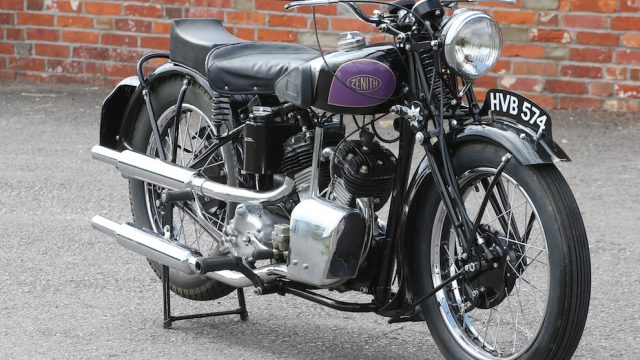
It did so by simultaneously changing the diameter of the crankshaft belt-drive pulley to alter the drive ratio, while moving the rear wheel back and forth via worm gears within slots cut into the rear chassis fork, in order to maintain correct belt tension. Later, a hand-crank system was developed which operated the mechanism via a vertical shaft and bevel gears, and this made the Zenith Gradua almost impossible to beat in the increasingly popular speed hill-climbs of the pre-WW1 era. This was because a Zenith rider could effectively change gear while climbing the hill without stopping, while other competitors had to make do with a single choice of gear ratio, and while the change in the wheelbase was undesirable, it wasn't a great issue at 1908 speeds. The system produced infinite variations in gearing from as low as 9:1 up to 3.5:1, but rival riders and manufacturers held this to be an an unfair advantage, so many leading clubs excluded Zeniths from their events. But Barnes was quick to capitalise on this ban, and registered a new trademark in 1911 emblazoned with the word 'Barred' in bright red letters across the Zenith emblem!
Zenith twice held the World Land Speed Record, and its rider Joe Wright was the first to break the 150 mph barrier in 1930 – though at first this was not recognised to be so
The opening of the Brooklands circuit at Weybridge in 1907 acted as a magnet for firms such as Zenith led by entrepreneurs like Barnes, who relished demonstrating their products’ worth in the hotbed of competition. Accordingly, with increased demand for its products necessitating a bigger factory, Zenith Motors moved to Weybridge in 1908, just half a mile from the track, and soon after in March 1909 aboard a Gradua-equipped Zenette-JAP, Freddie Barnes set the very first standing-start record (18.63 sec, averaging 12.89 mph!) for climbing the steep Brooklands Test Hill, which every customer Zenith Gradua road bike was certified as having done, after stopping and restarting on the 1-in-4 or 25% gradient – something no single-speed bike could do. Barnes was also no mean racer, setting many speed records and successive Test Hill marks, as well as scoring many race victories at Brooklands on Zenith machines with both two and three wheels, and also chalking up numerous successes in long-distance reliability trials [see Zenith adverts in photo folder].
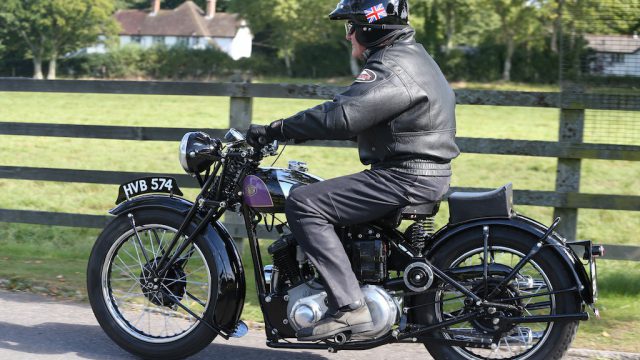
Zenith’s large range of models always employed proprietary engines such as Precision, Fafnir, Bradshaw and Villiers, but it was JAP motors made just the other side of London at Tottenham which predominated, and when Zenith began building JAP-powered racebikes in 1911, these employed chain-drive countershaft gearboxes. After two seasons of development, in 1913 Zenith introduced three customer racing models with ohv JAP engines and chain-drive transmissions – two singles and its first competition V-twin – and the following year its much revised road models featured a blend of the two final drive systems in the form of a chain-driven countershaft complete with clutch and kick-starter mounted in front of the crankcase, which carried a large pulley to drive the rear wheel via a long belt, while retaining the Gradua Gear and rear wheel movement. The engines still came from JAP, but all were now V-twins of 3.5hp, 6hp or 8hp format. During that year, the firm moved to two large but draughty wooden hangers on the banks of the River Mole in what Barnes called ‘Hampton Court, Middlesex’, which was really the then less salubrious suburb of East Molesey, on the other side of the River Thames from the Royal Palace. Still, the Southern Railway station 200 yards away was termed ‘Hampton Court’, so maybe the name-place largesse was OK!
Post-WW2 survival saw Zenith recommence manufacture in 1948 of its Big Twin model for solo or sidecar use, 250 of which were built before the company’s final 1950 demise
With war rapidly approaching Zenith began focusing on making commercial sidecar outfits, ostensibly to replace the horses commandeered by the military for use on the Western Front. Like many rival companies, from 1914-18 Zenith placed its manufacturing operation at the disposal of the War Office, although it couldn’t resist advertising four Zenith victories at the so-called ‘All-Khaki Meeting’ held at Brooklands in August 1915, and restricted to serving soldiers. This allowed it to trumpet the motto that “When there’s fighting to be done, Zenith will always win!” – a somewhat less salacious slogan than one it had previously employed to the effect that “Zeniths are built from finest quality throughout. No female labour employed.” Sexist? Never…
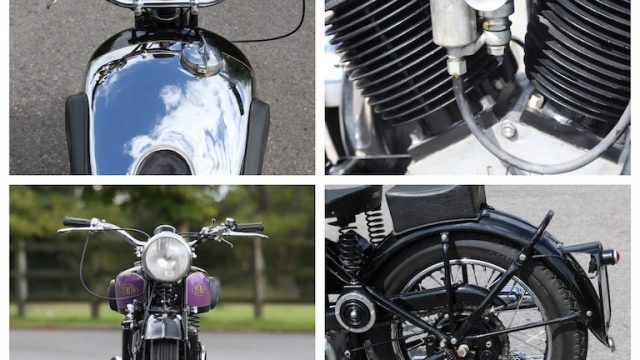
Zenith’s JAP-powered civilian production restarted in 1919, though a model fitted with a 494cc oil-cooled Bradshaw flat-twin engine was introduced in 1921 with the outright choice of belt-drive transmission with the Gradua gear, or all-chain drive via a three-speed Sturmey-Archer gearbox, and with belt final drive increasingly out of favour, the Gradua system was dropped from 1923 onwards. But after Brooklands reopened in 1920 Zenith resumed its racing and record-breaking success, with Freddie Barnes switching to a support role to those such as speedy customer I.P.Riddoch who enjoying repeated victories at Brooklands.
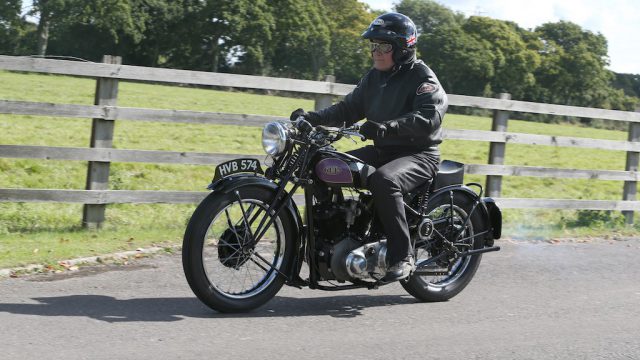
There, in October 1922 on a Zenith fitted with an ohv V-twin JAP FTOR engine, Bert Le Vack became the first man to break the 100mph barrier on a British motorcycle, with a speed of 100.29 mph – in pouring rain! Douglas Davidson had been the first to achieve this feat in April 1921 on a Harley-Davidson, also at Brooklands, but in 1925 the outright Brooklands motorcycle lap record was captured at 109.90 mph by another Zenith-JAP rider, Joe Wright. By then, Zenith riders held more Gold Stars for the number of Brooklands laps at over 100 mph than those of any other marque – Zenith was simply ‘the make to have' if you wanted to earn a ton-up Gold Star. In 1926 the record was raised still further to 113.45 mph by Wright’s fellow Zenith-JAP rider and ex-WW1 flying ace, Captain Owen Baldwin, before two years later Wright recaptured the Brooklands speed crown at a remarkable 118.86 mph, where it stayed until 1935.
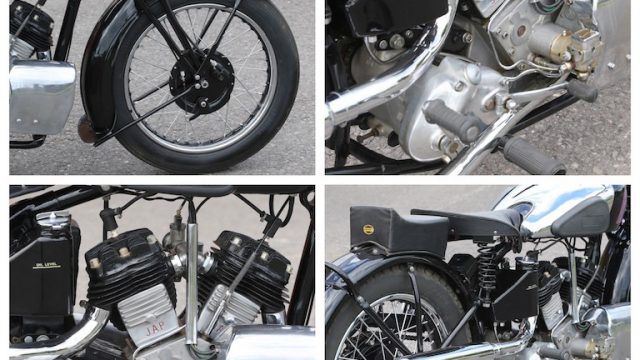
Baldwin meanwhile had ventured abroad with his Zenith-JAP in pursuit of the World Land Speed Record on two wheels, preferring the long, straight and much smoother stretch of French N20 public roads tarmac at Arpajon, south of Paris, to the increasingly bumpy Brooklands concrete bankings. He briefly held the record at 124.27 mph for less than a day in August 1928, before Bert Le Vack on a Brough Superior raised it to 129.00 mph that very afternoon on the same stretch of road. But three weeks later Ernst Henne captured it for Germany on his blown BMW at 134.67 mph, the first time the record had been held by a supercharged machine. Joe Wright responded to this one year on in August 1930 by setting a new record of 137.23 mph in Arpajon on a new mount, the duplex-steered supercharged OEC Temple-JAP. But three weeks later Henne retook the honours by an infinitesimal margin at 137.74 mph – whereupon on November 6 Wright ventured to Ireland to become the first man to smash the 150 mph barrier by clocking 150.74 mph along the Carrigrohane straight outside Cork on, supposedly, the OEC Temple-JAP. But in fact the woodruff key in the engine sprocket had sheared on this bike during a sighting run, and so Wright’s own faithful Zenith-JAP, now also supercharged and which he’d brought along as a reserve bike was called into action, and it was on this machine that he actually set the new World Land Speed Record.
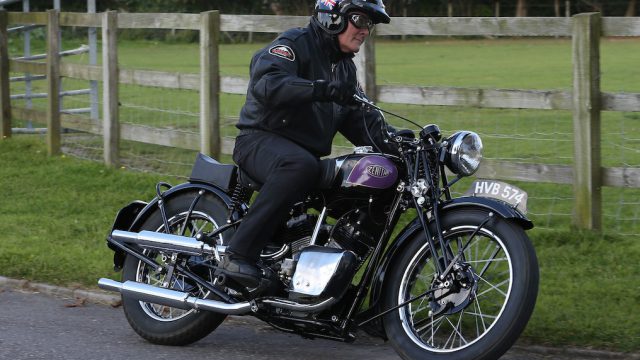
While undoubtedly praiseworthy, this was highly inconvenient, because OEC had sponsored the bike’s owner Claude Temple to make the record attempt, and now a rival brand was about to gain the kudos from breaking it. Except, Zenith Motors was no longer in business, having called in the receiver two months earlier in the wake of declining sales owing to the all-pervading economic Depression. The solution was a simple one in those days before live coverage of such attempts, even though the Pathé newsreel covering the event depicted the Zenith parked against a hedge while the OEC was tow-started! The World record-setting Zenith was supposedly heaved over the side of the ferry transporting the team back across the Irish Sea to Britain, and at the Olympia Show two weeks later the purported record-breaker was displayed on the OEC stand. In those days, truth could be anything you wanted it to be – fake news is not a modern invention! So as Zenith was (temporarily) out of business, and OEC was paying the bills, the fact that the Zenith had made the run and not the OEC was conveniently overlooked in the post-record publicity, and even in the FIM record books. But an eyewitness account by Freddie Barnes, who had been present that day in Ireland, was published in 1931 which recorded the Zenith record, and eyewitness accounts later confirmed his claim.
Powered by 747cc longstroke slugger of a JAP 50º V-twin engine measuring 70 x 97 mm and producing 24 bhp at 4,000 rpm at rear wheel, with 4-speed Burman gearbox
Zenith’s financial problems weren’t so great that an injection of capital couldn’t resolve them, and by July 1931 it was back in business, having been purchased from the receiver by one of its biggest dealers, Writers Ltd. of Kennington Cross, who were also South London’s main agents for Ariel. Production restarted at the Hampton Court factory, with a range of JAP-engined bikes headed from 1933 onwards in terms of capacity by the Big Twin model. Powered by a 747cc sidevalve 50-degree V-twin JAP engine measuring 70 x 97 mm, this longstroke slugger was as different as could be from previous Zenith V-twins powered by the same engine maker’s performance motors. But it was a child of those dismal times for which there was a ready market, and although as many as twenty different Zenith models fluttered in and out of the company’s sales brochure during the 1930s, from a 172cc Villiers-engined two-stroke model on upwards in capacity, the stolid, solid-selling Big Twin stayed put, and was especially appreciated by the sidecar set.
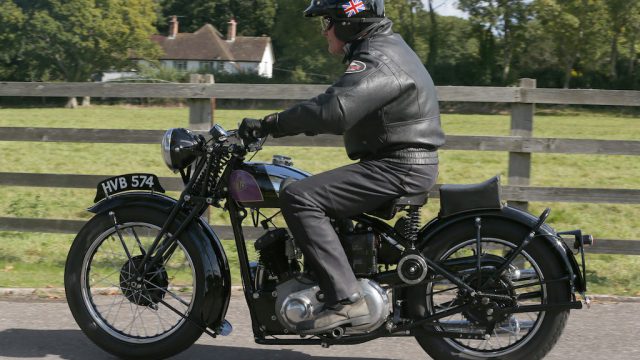
World War 2 once again interrupted Zenith’s production, and sadly brought the demise of Freddie Barnes, who was killed in a 1942 Luftwaffe air raid on London. But the company’s Hampton Court factory survived intact, with the added benefit of the River Mole’s waters driving a generator to supply free and constant electricity during the frequent power cuts during and after the war. And, quite remarkably, production of Zenith motorcycles recommenced in 1948, although shortage of metal and other materials meant there was just a single model, the venerable girder-forked 747cc sidevalve Big Twin exactly as manufactured before WW2. Around 250 of these are supposed to have been made from 1948 on, many of them exported to colonial outposts, before Zenith finally ceased production in 1950, starved of engines. While perfectly solvent, it had run out of stocks of the 747cc sidevalve V-twin, which JAP had no intention of resuming manufacture of on the grounds that it was outdated even by 1940s standards, let alone the fab Fifties, and attempts to source supplies of an alternative motor of any description came to naught. The company was forced to cease trading, paid off its debts and was wound up, and the story of what’s arguably the most successful British marque nobody’s ever heard of today, came to an end.
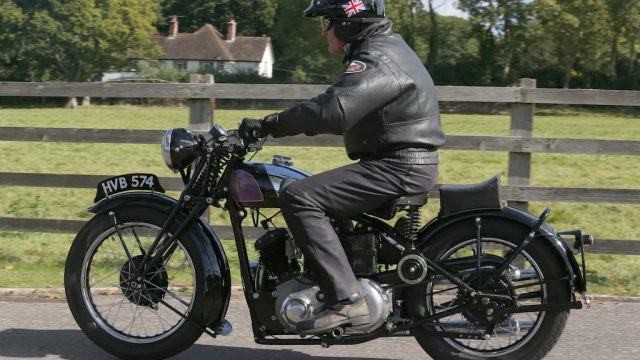
Gone, but not forgotten – especially by the indefatigable Sammy Miller, whose eponymous Museum www.sammymiller.co.uk on Britain’s South Coast has two very different Zenith models among the 300-odd bikes it has on display at any one time. One is a 1921 Gradua-equipped model – but the other is a Big Twin carrying chassis no, 14015, which identifies it as the penultimate Zenith to be made – the last one ever built just after it was apparently shipped to Australia. It’s fitted with a JAP engine bearing no. MTW 73710, which was manufactured in Tottenham in the 1930s, but sat on the shelf all through the war until finally utilised in this motorcycle. This was first registered on June 22, 1950, before eventually finding a home with a Mr. Peter Bennett on August 14, 1954 – he’s the only previous owner in HVB 574’s logbook. Sammy bought it complete but in somewhat shabby condition about 25 years ago – the 23,733 miles shown on the Smith’s speedo are probably accurate – and after smartening it up it’s been a mainstay of the Museum’s array ever since. Because almost every bike on display there is in running order, the chance to take this handsome-looking two-wheeled dinosaur with its dash of purple on the three-gallon fuel tank for an afternoon ride around the nearby New Forest roads, delivered a window on another world that’s all but forgotten today.
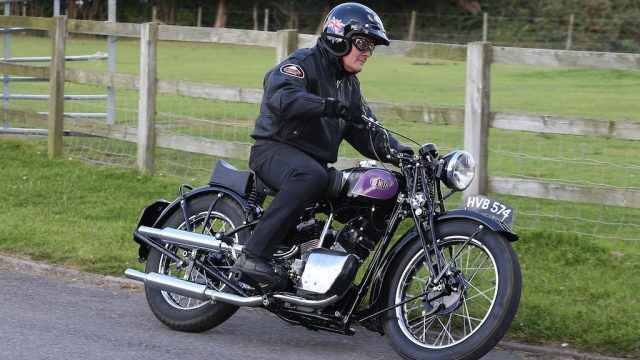
For in the immediate aftermath of the global conflict which interrupted the Zenith Big Twin’s production for six long years, what mattered most to potential customers was not performance but durability and economy, and above all the ability to run on the ultra-low octane Pool petrol of the day, which even by 1950 had not risen above 80 octane, to which the Zenith’s neo-vintage sidevalve JAP engine first manufactured in the 1920s with its 6:1 compression ratio, was ideally suited. But the downside was the leisurely performance and far from scintillating acceleration I was to discover it had, after settling astride this neo-vintage machine’s comfortable Lycett saddle (the Britax pillion pad looks quite the opposite!), kick-starting it easily into life thanks to the low compression ratio, and selecting bottom gear of the four available in the Burman gearbox – a type which had seen active service on thousands of Matchless G3L WW2 army bikes, thus demonstrating its robustness.
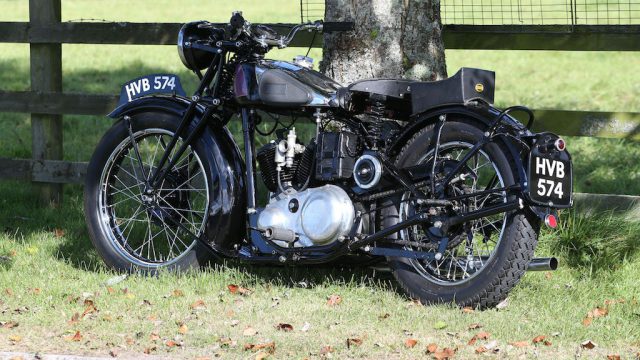
First and second gear are very low, doubtless with family sidecar use in mind with Mum, Dad and a couple of nippers all aboard, plus luggage, and I easily proved that the Zenith will start off from rest in third gear on level ground while hardly slipping the light-action clutch. The lower three ratios are merely a passport to selecting top but, having done so, to waft along with barely a whiff of throttle at 45-50 mph as shown on the 125 mph reverse-sweep Smith’s speedo – surely left over from the days when Zenith V-twins were vying for a Gold Star! – was relaxing and enjoyable on a warm English summer’s day. That’s the Zenith’s comfortable pace, and indeed on the Big Twin it’s the journey that’s important, not how fast you get there, although if you really insist you can coax just under 65 mph out of the lusty sidevalve powerplant – but no more. That’s a speed which may seem laughably slow for a 750 by today’s standards, but back then it was quite sufficient for this to be considered a well thought-of practical and robust conveyance, especially on roads that had suffered under wartime bombardment, or simply not maintained even if out of reach of enemy bombers. The longstroke JAP engine is willing and hearty, and while far from potent it’s flexible and forgiving, partly thanks to the small one-inch/25mm Amal carb serving both cylinders, but most of all to that massively long stroke. You can throttle back to 15 mph on the speedo in top gear, yet the Zenith will accelerate cleanly away without transmission snatch, nor any need to touch the clutch lever. It’s a semi-automatic in all but name.
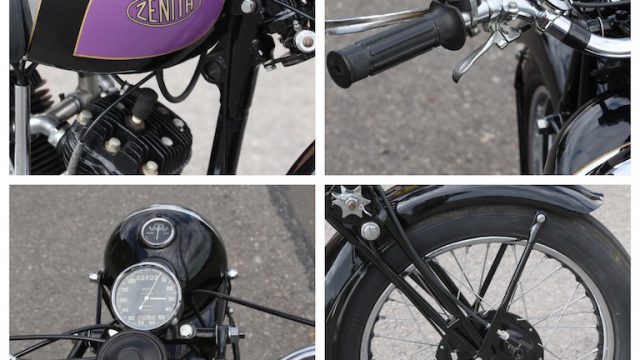
Equally vintage in character are the Zenith’s cycle parts, with its rigid frame devoid of rear suspension, and the Druid girder fork unable to do much in the way of cushioning road shock, although the Big Twin’s estimated 175kg dry weight did ensure it sat down well over the worst of bumps, and in spite of the rigid rear end it didn’t skip about much at all over them. The pair of 7in/178mm single leading-shoe drum brakes front and rear set into Zenith’s own hubs coped OK with the kind of momentum the Zenith’s motor is capable of delivering, and dropping into third gear delivered quite effective engine braking, so with just me aboard it stopped OK. With Mum on the pillion and the kids and their summer holiday caboodle in the sidecar, that would be a different matter, however. The Zenith did steer unexpectedly well, though – considering that the machines developed by Freddie Barnes achieved most of Zenith’s enviable competition success as a company in straight line speed events, or in races on the Brooklands bankings which weren’t such a stern test of handling in turns, but predominantly of high-speed stability, at the much lower speeds that the Big Twin was capable of, it seemed stable and reassuring.
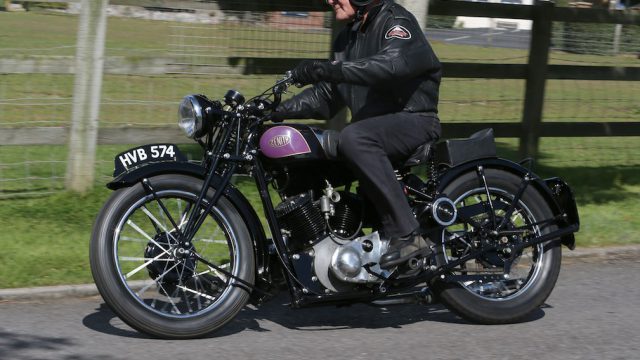
And indeed, that’s the irony of this motorcycle, for having gained such a glorious reputation for technical innovation in the early days of motorcycling with its Gradua Gear as well as the Bi-car, followed by competition success at the highest level which its customers perpetuated with bikes they had bought from the Hampton Court factory, for Zenith to be uniquely remembered by this faithful friend of a low performance plodder with which the British marque saw out its days before bidding farewell to the marketplace, would be a pity. Let’s instead recall that November day in southern Ireland when Joe Wright broke BMW’s existing World record by the massive amount of exactly 13 mph on his Zenith V-twin, going 10 percent faster than anyone else had ever done before on a powered two-wheeler, in becoming the first man ever to exceed 150 mph on a motorcycle. In more ways than one, Zenith’s success that day been the best-kept secret of British motorcycling!
You can also read: R1200GS on Death Road. The Most Dangerous Road in the World? | Salar de Uyuni
